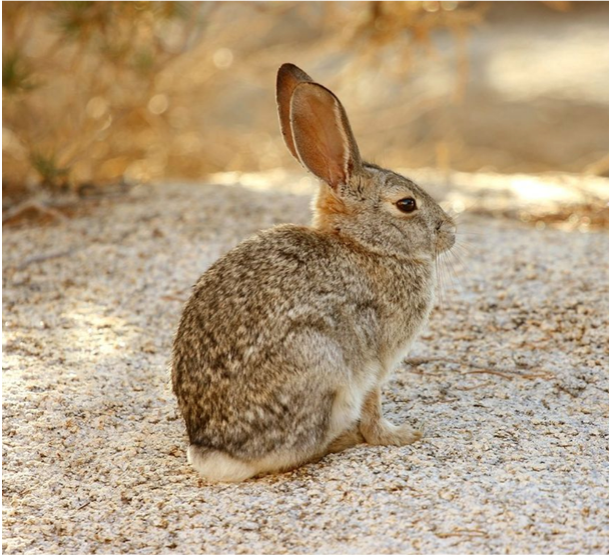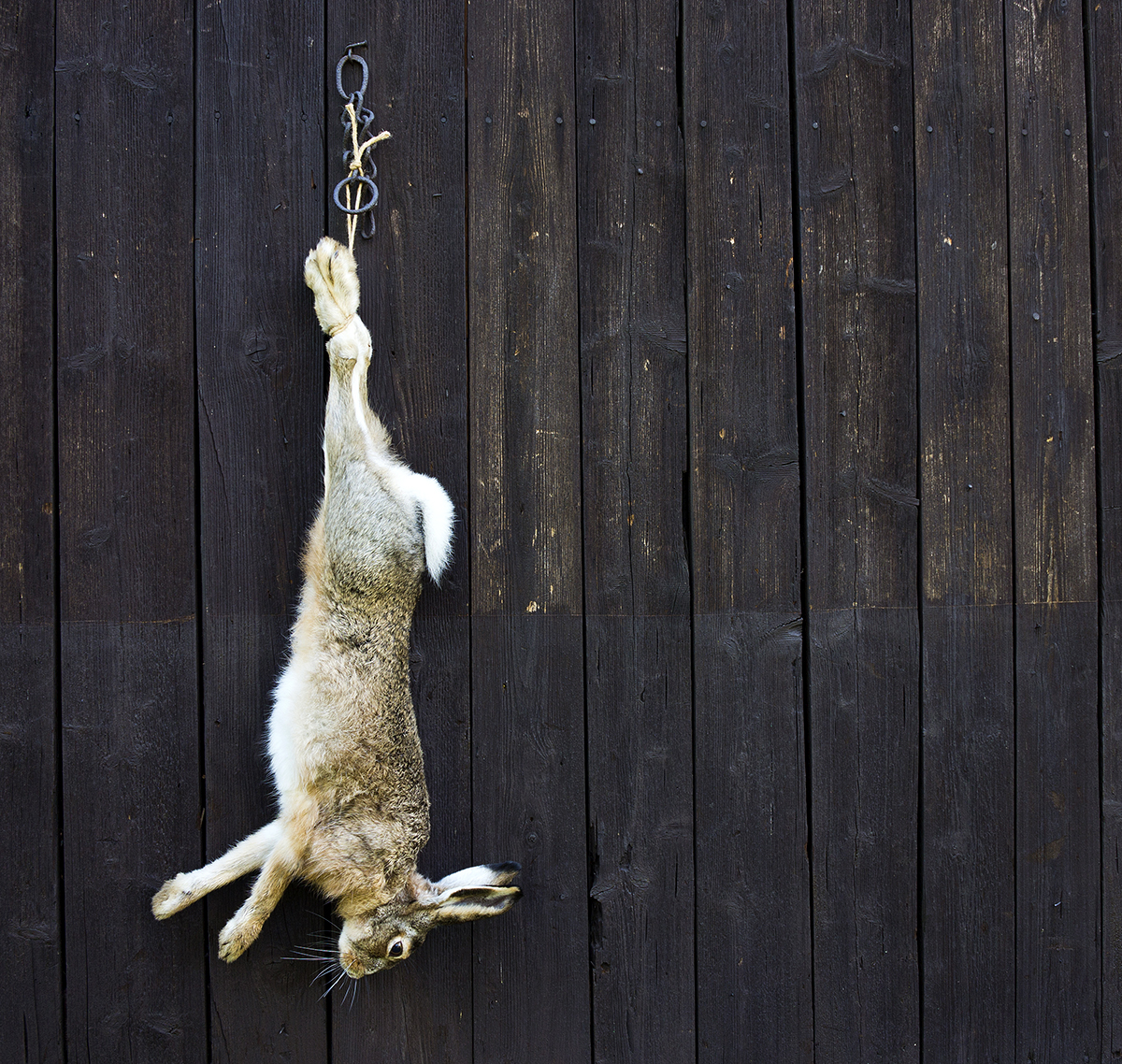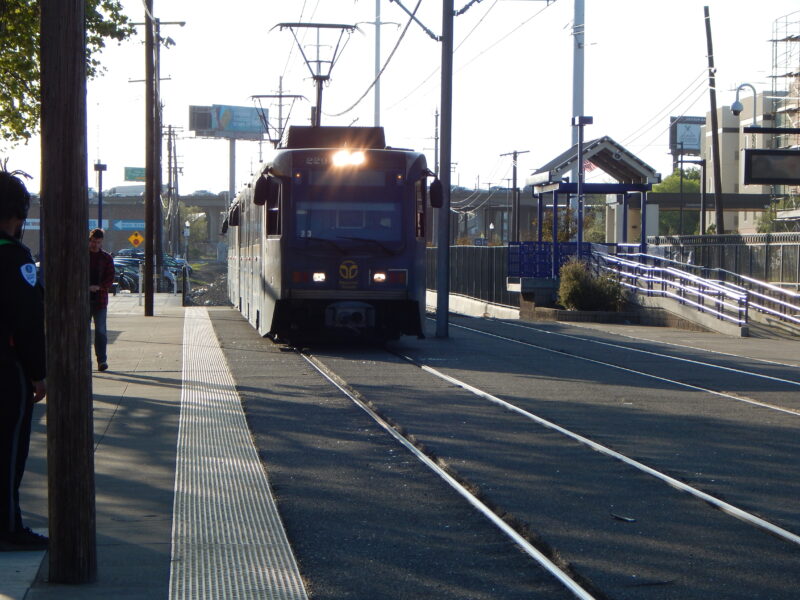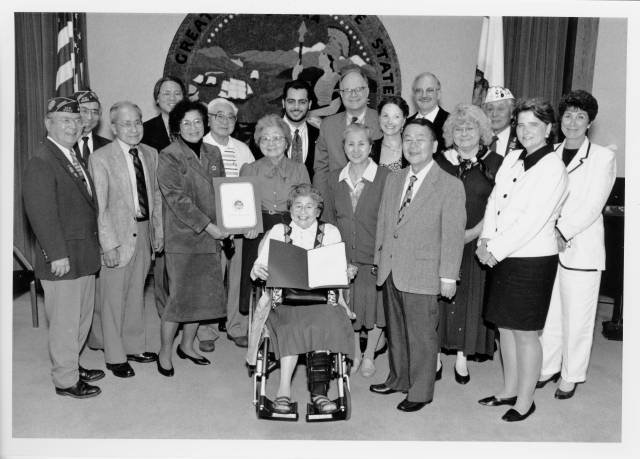Sac State has a rich ecological history, if sometimes absurd. Today, the campus is a scenic, biodiverse landscape brimming with plant and animal life at practically every corner. But did you know the college grounds that have earned the title ‘tree campus USA’ are soaked with the blood of a decades-old massacre?
The stretch of land we now occupy once used to be a Hops field and peach orchard. This was bulldozed down to make way for campus structures in the 1950’s, and the land became a muddy dustbowl, which had to be reforested. The university’s early years were marked by this uphill battle against the landscape. One of the biggest obstacles faced by the college in achieving the lush green campus we have today was a booming jackrabbit population, which relentlessly ate any shrubbery planted by landscapers. In fact, they were so detrimental to our plant life that one section had to be replanted four times because the rabbits would clear it out overnight.

College authorities’ solution to the vermin problem was an unconventional one, though definitely effective. According to Sac State Historian George S. Craft’s biography, “To solve the problem, college authorities invited faculty and staff to take part in jack rabbit hunts.” Attendees were even asked to bring their own shotguns while ample ammunition was provided! Between 100-200 rabbits were killed every week (though there is no way to confirm this figure).[1]
Following the hunt, forestation efforts were definitely successful, and the trees flourished in the absence of their long-eared predators. Between Fall 1953 and Spring 1954, 3000 trees were planted. Today, students enjoy over a thousand species of plant life on campus, with the Arboretum being a favorite with students and the local community. But most have no idea of the massacre that took place just beneath their feet 70 years ago.
The Aftermath
The jackrabbit hunt is a largely forgotten event in college history, with no images of the event found so far. However, we can confirm its occurrence due to a few scattered sources recording the university’s early years. The late historian George S. Craft’s book “California State University Sacramento: The First Forty Years: 1947-1987”, in describing landscaping issues of the time, mentions the jackrabbit hunting drives. A singular vignette found in the university archives dating back to 1978 also briefly, but explicitly, documents the ‘100 to 200 jack rabbit carcasses’ of the season. However, the jackrabbit Massacre was best commemorated by the early student body of Sac state through local newspapers.
As recorded in the State Hornet in 1953, a mysterious ‘John Dewey Jack Rabbit’ was enrolled at the university, reported to “pay his way through college by working as a lawn mower and shrubbery pruner”. The university’s first informal dance paid tribute to the extinct rabbit population in a similarly macabre way, organized by students who jokingly called it the “Jack Rabbit Frolic”.[2]

Other editions of the newspaper reference him as “John Dewey Jack Rabbit, one of the many long ears which occupied the campus long before the intellectuals took over”[3] and offer “due apologies to John Dewey” for the life science experiments conducted on campus that used live animals[4].
The newspapers’ repeated mascot for the rabbits, John Dewey, ironically references the American philosopher and educational psychologist of the same name, who emphasized the value of nurturing pets like rabbits in a classroom setting.

A 1987 edition of the State Hornet titled ‘Forty Years in a Hops Field’ finally acknowledged the event as part of the university’s environmental history, coining it “a bloodthirsty event forever to be known as ‘The Great Jack Rabbit Massacre’”. [5]
Though it is deeply buried within public memory and sparsely documented (most definitely due to its grizzly nature), the jackrabbit massacre is an event that deserves to be remembered, if only because of how bizarre it is, as a part of Sac State history.
Notes
[1] George S. Craft, California State University, Sacramento: The First Forty Years, 1947-1987, (Sacramento: Printed by George Lithograph, 1987), 49.
[2] Unknown author, “‘Dewy’ Publicizes Rabbit Frolic,” State Hornet, February 27, 1953, 1.
[3] Unknown author, “Rattler Fails Try At SSC Enrollment,” State Hornet, November 17, 1953, 1.
[4] Unknown author “On-Campus Barn Explained” State Hornet, October 9, 1953, 1.
[5] Brian E. Roberts, “Forty Years in a Hops Field,” State Hornet, October 21, 1987, 4.
Bibliography
Craft, George S. California State University, Sacramento: The First Forty Years, 1947-1987. Sacramento: Printed by George Lithograph, 1987.
Roberts, Brian E. “Forty Years in a Hops Field,” State Hornet, October 21, 1987. https://californiarevealed.org/islandora/object/cavpp%3A8590
Unknown author, “‘Dewy’ Publicizes Rabbit Frolic,” State Hornet, February 27, 1953. https://californiarevealed.org/islandora/object/cavpp%3A83700
Unknown author, “Rattler Fails Try At SSC Enrollment,” State Hornet, November 17, 1953. https://californiarevealed.org/islandora/object/cavpp%3A83716
Unknown author “On-Campus Barn Explained” State Hornet, October 9, 1953. https://californiarevealed.org/islandora/object/cavpp%3A83718
Image Credits
https://realtree.com/small-game-hunting/articles/how-to-hunt-giant-canecutter-rabbits



This was a very interesting read. People in California have had a long and complicated relationship with the environment and it was fascinating to learn that even the creation of Sacramento State revolved around a need to control nature. This topic is something that will come to mind whenever I walk around campus and admire its natural beauty.
This article was fascinating and new for me to read. I had no idea that the university had such a past that defiled nature to make way for human progress. When people see Sac State today, they think of it as an environmentally friendly place that supports local wildlife. However, like much of history it has its own contradictions that it tries to fix or amend in the present. As it is a part of the history of the university and progress, it can not be forgotten that this was a root part of the campus that people are trying to fix, not forget.
Great article! It was definitely the title that caught my attention. I had no clue that our tree campus hosted such murderous action. When I step on campus, everything always looks so animals friendly, and a great campus to host wildlife. I was glad to read that the jackrabbits were commemorated in the local newspapers, just to be spoken about. The Jackrabbit hunt is a moment in history buried with the rest of history, but it’s GREAT to share that history with others.
Quite an interesting read to be sure; Many of us have never even taken the history of the University into account when walking around campus either with friends or when rushing to classes. I had no idea that this measure had been taken to reforest the lot, and although it paved the way to grant us a lush campus with our currently plentiful wildlife, a better solution could have been conceived had more thought been given to it.
What a wild and interesting read. Of all the oddities that you hear about college campuses doing in the early years, deforestation and animal cruelty does slightly come to mind. But to be right under are feet as forgotten lore, about our beloved campus really puts into perspective how documenting even obscure and odd events in history can let those of the future know what really happened. It saddens me to know so many jackrabbits had to go, but I do agree they are a menace to vegetation. I only wonder if those hunts would have had extra credit or possible some units behind them, but it being so recently discovered, only time can tell.
Very interesting article! The title is what made it stand out among the other articles. I’ve always enjoyed the landscaping and wildlife on the CSUS campus and yet I never once thought about what measures were used in order to facilitate the landscaping process when the campus was initially built. However, as someone who works in agriculture, I’ve seen how much damage small animals can do to small plants and trees that have just been recently transplanted. Unfortunately, in most cases the animals are eradicated, otherwise (like the article indicated) the animals just keep coming back. It’s not a very pleasant solution, but I can’t think of a more efficient one.
This is such a crazy story. I had no idea that Sac State ever had a rabbit population. I know the campus is really flourishing in plants and wildlife but I was surprised to hear we had a large jackrabbit population before. The headline of this article was really eye-catching too. What a fantastic read.
I have always appreciated how Sac State’s campus is really beautiful in spring and in early fall. Whoever was in charge of the botanical layout of the campus did a great job because it is still very aesthetically pleasing. The removal of the jackrabbits is very gruesome and it very gladiator like but it paved the way for the campus we enjoy today. Now we enjoy the presence of the friendly squirrels on campus.
First of all, that’s insane. I could only imagine how wild it would have been for people to bring in their own shot guns to kill jack rabbits. I do feel like they could have done it a lot more humane than that. Its also kind of interesting to think about because i don’t think most people even think about the history of sac state when they are walking through the campus or even when they are enrolling.
Amazing read! It’s so interesting to see this buried history come forward and makes me wonder what other secret history Sac State hold. There is a ton of wildlife all over the campus so I don’t doubt that this was a place that held a ton of Jackrabbits. This is definitely a fun fact I’d love to share with friends and fellow Hornets.
Wow, this is such a bizarre event that I had no idea about. It seems so random but also very cruel! Im glad the students do not participate in this event today.
Thank you for providing insight to this forgotten bit of Sac States history.